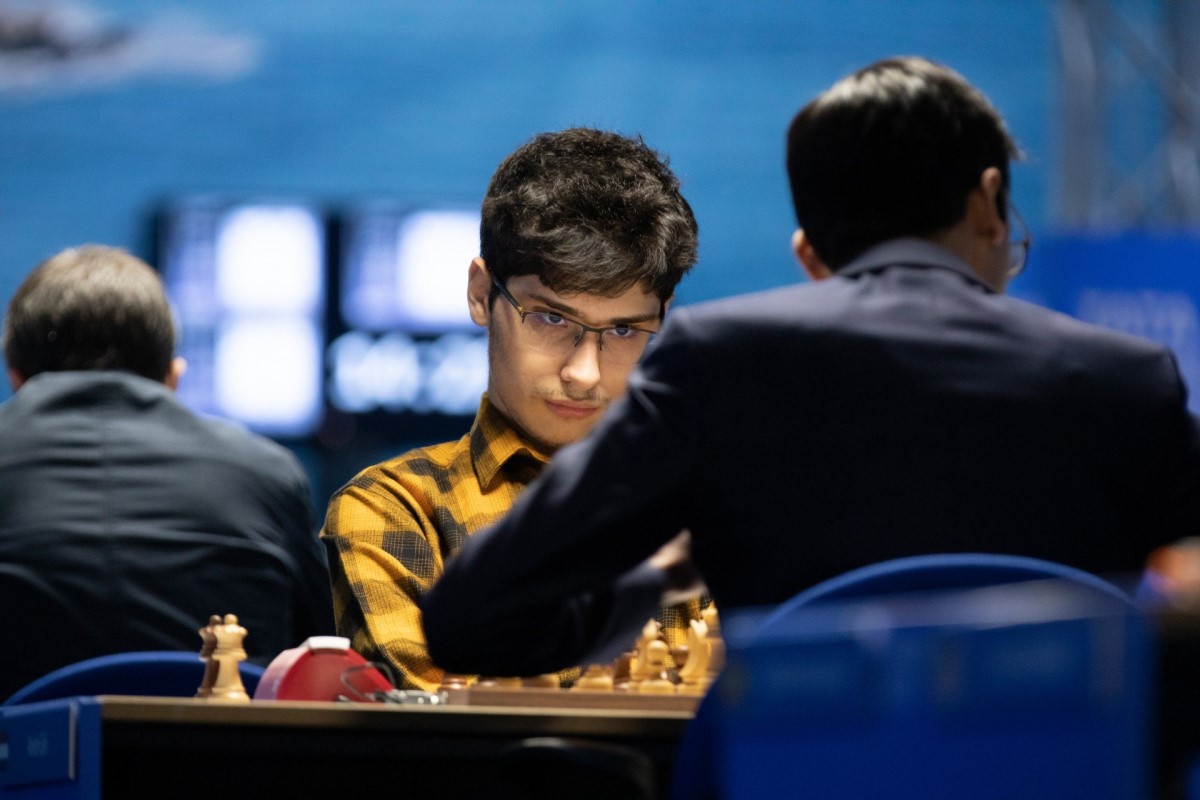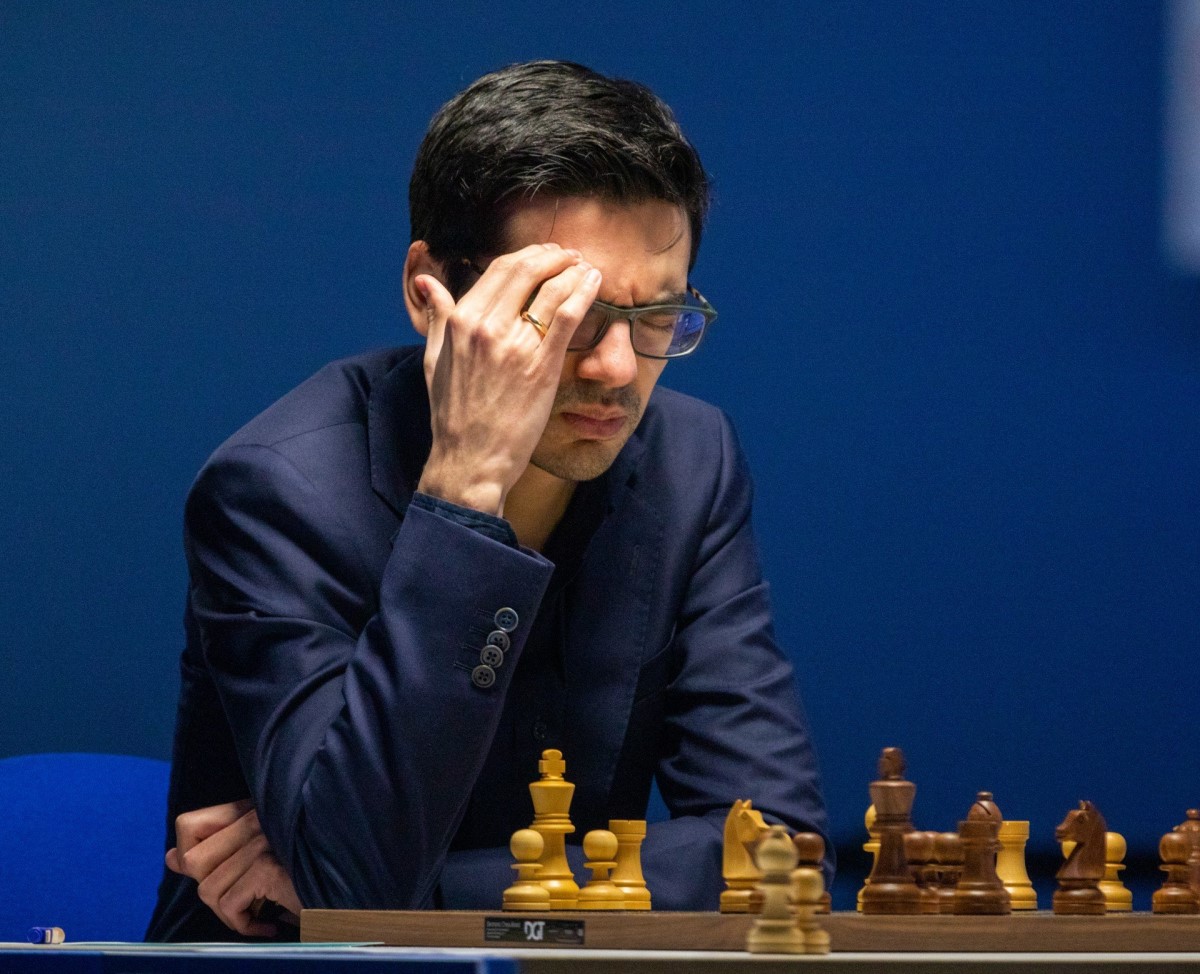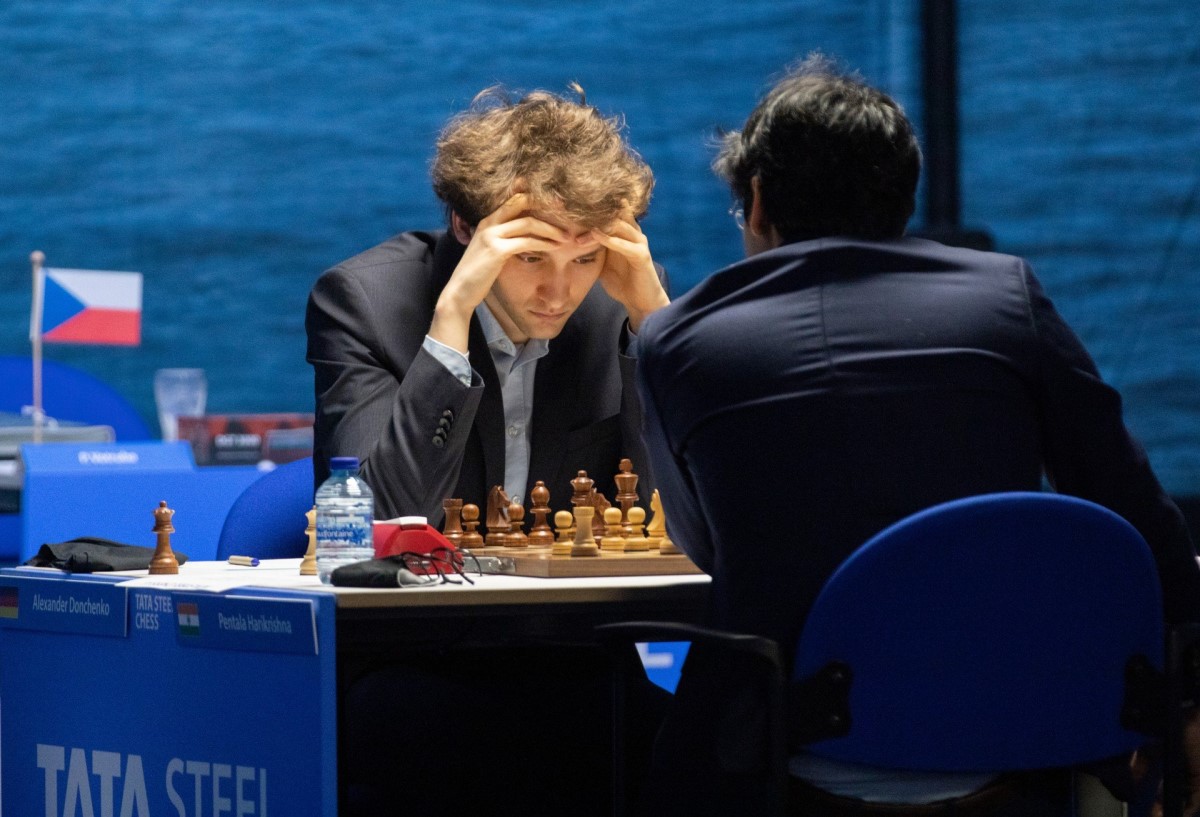


Anish Giri was two pawns up in and endgame with rooks and minor pieces in his crucial encounter against Alireza Firouzja in round 12. Eventually, that turned into a position with four passed pawns against a knight, with a rook per side on the board. For a long time it seemed like Giri was heading to a victory, in which case a draw in the final round would have been enough to secure tournament victory. However, Firouzja never stopped creating practical problems for his opponent and was rewarded with a half point after a lengthy struggle.
The 17-year-old wunderkind commented:
It was a miracle. I guess it was payback for yesterday — the same thing happened yesterday, so I’m very happy for the result and I look forward for tomorrow.
Firouzja referred to the chances he missed against Fabiano Caruana in round 11, when he was first in deep trouble and then got a clearly better position after the time control. No matter what happens on Sunday, Firouzja has once again proved he is not only amazingly strong but also a fearless fighter. And he could still end up winning the tournament!
In fact, there are five players who still have theoretical chances of taking the title. Giri, of course, who will play black against David Anton; Firouzja (white against Wojtaszek), Caruana (black against Tari) and Jorden van Foreest (white against Grandelius) are a half point behind; while Andrey Esipenko (black against Donchenko) would need a number of results going his way to catch up with Giri, as he is currently trailing the leader by a full point.
The action on Sunday starts two hours earlier, at 11.00 UTC (12.00 CET, 06.00 ET).

Another lengthy and enjoyable edition of the tournament is coming to an end | Photo: Jurriaan Hoefsmit
It does not make sense to keep calling Firouzja a talented rising star, as he has so far gained 10.8 rating points in Wijk to reach the 14th place in the live ratings list — he is provisionally above Vishy Anand, Hikaru Nakamura and Peter Svidler in the ranking. And on Saturday he demonstrated that he is not all about tactical skirmishes and spectacular attacking wins, as he defended a worse position for hours against one of the strongest technical players in the world.
Against 1.e4, the youngster played the French instead of his usual Caro-Kann Defence. Giri, also a renowned theoretician, was ready for the challenge, and played a line which Firouzja described as “a very good, solid way” to get a better endgame.
Firouzja considered his 36th move to be a key mistake:
Instead of 36...Kf8, the youngster thought 36...f6 was better in order to bring his king to the centre more quickly.
Nine moves later, White had two passed pawns on the queenside, and it seemed a matter of time before he converts his position into a win:
Converting this into a full point is by no means trivial, especially five hours into the game in the twelfth round of a tough elite tournament. However, as Giri pointed out, playing 47.a4 only complicated matters for white, as he will always need to keep an eye on his b4-pawn.
Soon after, Giri agreed to give up his bishop to get four passed pawns (connected in pairs) against Black’s knight, with the rooks still on the board:
This position is still winning for white, but Firouzja continued to find the most stubborn defensive resources until a draw was agreed on move 67.
Nigel Short explained on Twitter:
The people who are sitting there omnipotently with their engines are not exhausted from a lengthy struggle against an opponent who resists obdurately. No one is telling @anishgiri "Now you only have one move to win." It is tough at the top #TataSteelChess
— Nigel Short (@nigelshortchess) January 30, 2021
German GM Karsten Müller took a closer look at the complex ending seen in the most important game of the round.

Still the favourite to win the event — Anish Giri | Photo: Jurriaan Hoefsmit
After his loss against Van Foreest on Friday, Pentala Harikrishna immediately bounced back to a fifty-percent score by beating Alexander Donchenko with the white pieces. The players reached a sharp heavy-piece endgame which the engines evaluated as equal. But, with queens still on the board, a single slip can lead to disaster:
42...Qxc3 was playable here for black, while his 42...Qf6 turned out to be the deciding mistake. Harikrishna spent two minutes deciding on 43.c5, when White gets to coordinate an attack first. There followed 43...dxc5 44.Rxc5 a3 45.e5 Qh8 46.Qb4:
White threatens a deadly discovered check and there is no defence for his opponent. After 46...Qa8+ 47.Kh2 Ke8 48.Rb5 Qc6 49.Rb8+ Kd7, a double attack put an end to the game:
50.Qd4+ and Donchenko resigned.
Endgame specialist Karsten Müller analysed how Black could have defended from the critical position that arose on move 42, noting that “constellations with queens and rooks have endgame and middlegame components”.

Alexander Doncheko was invited as a late replacement | Photo: Jurriaan Hoefsmit
Out of a Petroff Defence, Maxime Vachier-Lagrave and Jan-Krzysztof Duda — both currently on 5/12 in the standings table — reached the following endgame by move 29:
White played the imprecise 30.d5+ here, and further worsened his position in the next move. Duda, however, was not able to finish off his opponent and a draw was agreed after 76 moves.
GM Müller took a closer look at the instructive ending with rooks and minor pieces.

Jan-Krzysztof Duda checking his colleagues’ game; while Giri calculates his difficult ending against Firouzja? | Photo: Jurriaan Hoefsmit